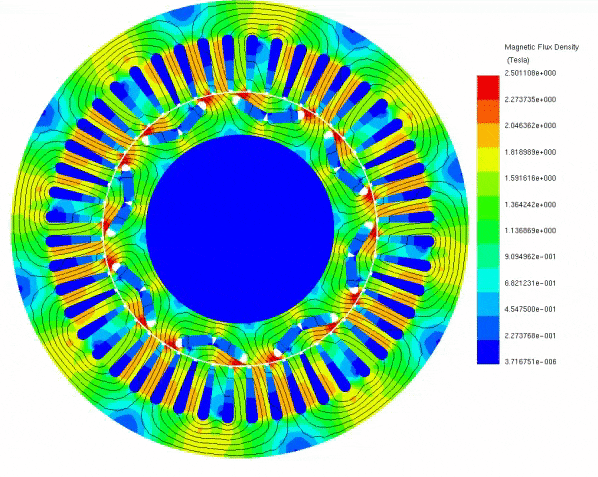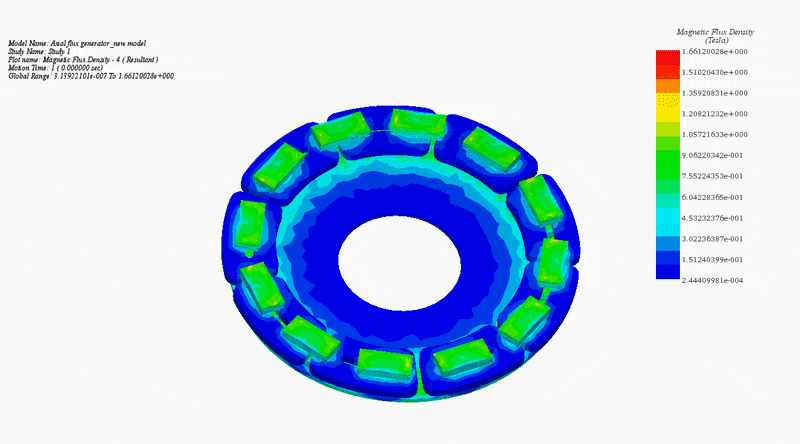
Technology Overview :
Radial and axial flux machines are the two types of electric machines. Radial flux machines are more frequent and have a lengthy history of usage. Despite the fact that axial flux machines have been around for a long time, their popularity has only grown in the last two decades. As their names suggest, the magnetic flux direction in axial flux machines is parallel to the machine rotation axis, whereas the magnetic flux direction in radial flux machines is radial.

Why is an axial flux machine preferred over a radial flux machine?
Because the flux route in a radial machine runs from one rotor pole to the first tooth in the stator, then through the stator back iron to the second tooth until it reaches another rotor pole, the flux path is significantly longer than in an axial machine. The axial flux machine, in contrast to the radial machine, has a shorter and more direct flux path. Through the airgap, it connects one pole to the other. The magnetic field stays strong over the shorter journey, helping to boost the machine's efficiency and power density. The magnetic flux course and direction in both devices are shown in 2D simulations made using EMWorks2D below.The flux in the radial machine follows a two-dimensional route. As a result, grain-oriented steel is not suitable for these machines. The magnetic flux route of the axial machine is unidirectional, allowing grain-oriented steel to be used. The iron losses in an axial flux machine may be reduced and the efficiency can be raised by 2% due to the greater permeability of this steel type.
EMS simulations showing two examples of radial and axial flux generators




Advantage of Axial Flux Topology when Compared to Radial Flux Topology

